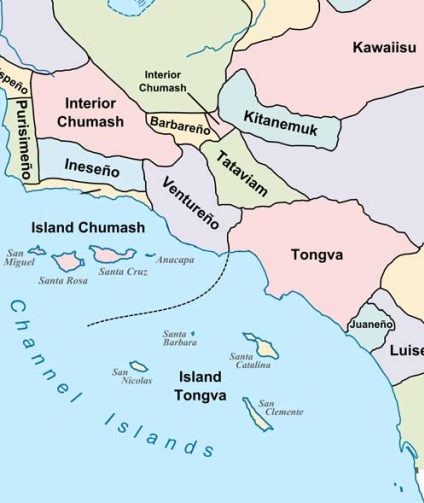Indigenous Recognition in Palos Verdes

Land in Southern California was once Native American land. Graphic by Eva Mayrose
“There is no land in North America that wasn’t once Native American land,” ethinic studies teacher and CARE advisor Christina Varela said.
Despite the controversial American holiday of Columbus day coming up, as well as the reemerging prevalence of human rights movements such as Black Lives Matter and Stop Asian Hate over the past year, Native and Indigenous cultures in the U.S. often go unrecognized and underrepresented in the media, government and public eye.
“We need to acknowledge who was here before us,” Varela said.
Although many Palos Verdes residents have lived in this area for decades or even a lifetime, few know about the history of the native tribes that inhabited the land we live on now.
Continuing to talk about and acknowledge native cultures today is important because, as Varela said, “this was once all their land. We are still on it, but they are still with us.”
On campus, student-run human rights club, CARE, recognizes Native American History Month in November.
The club’s focus during that month is “celebrating, appreciating and educating ourselves [about] Native American issues and history,” senior and CARE member Will Sasaki said.
Moreover, CARE “has started to use a land acknowledgement at the beginning of each of [their] meetings [to help] remember and reflect [on] the stolen land from previous Indigenous communities,” Sasaki said.
Although many students are taking initiative and learning about issues that affect Native Americans, the school’s curriculum is excluding this information with a different textbook adoption.
“Our new textbooks have even [less information about Indigenous cultures] than our new ones,” Varela said.
The land of Southern California were once home to the indigenous Tongva tribe for 7,000 years up until the arrival of the Spanish conquistadors and missionaries brought by Juan Cabrillo in 1542.
Although interactions were friendly and mutualistic in the beginning, when settlers continued to immigrate to Palos Verdes and Baja California, the Tongva had their homeland, traditions and way of life ripped away as a result of being forced to assimilate into Spanish missionary culture.
Students in the community have the resources and opportunities to address these issues and create positive change.
Just one example is the Palos Verdes Interpretive Center, which offers an in-person learning experience about the history of this land and the natives who inhabited it.
Built in 1984, the institution’s goal is to educate those on the history and wildlife of PV through interactive exhibits and tours.
Decades later, the museum is still a popular and informative field trip for many history students in elementary and middle school.
“The more we learn about our fellow human beings, the better we are to our fellow human beings,” said Varela.